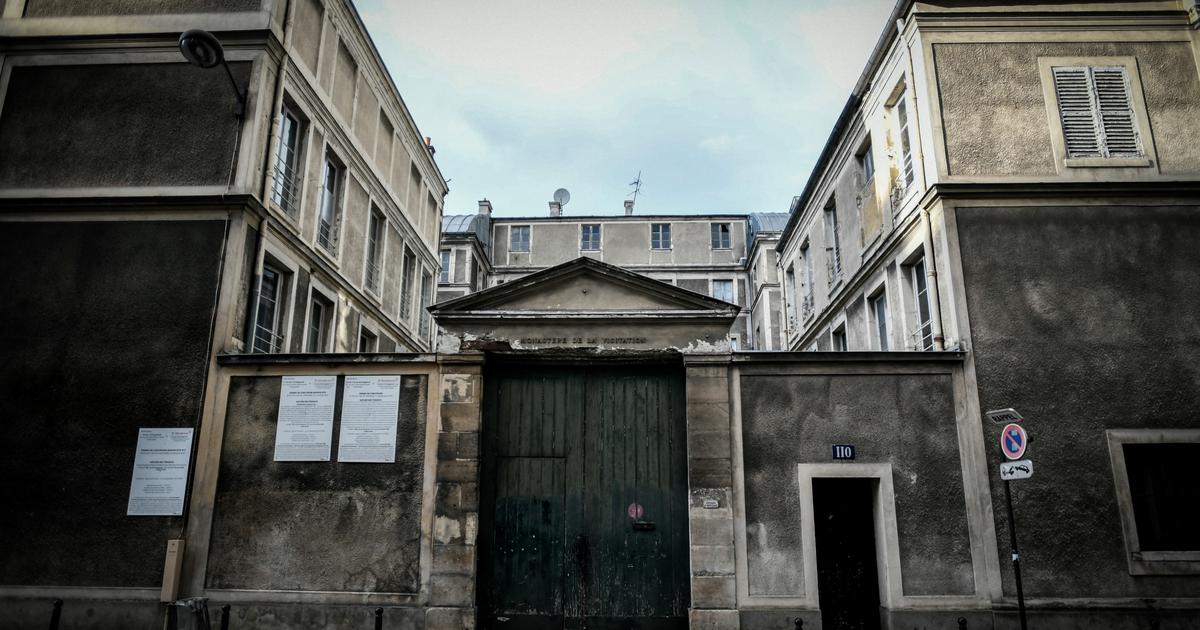The biggest challenge was the bell cage, because the damage to the load-bearing beams was greater than expected.
But now, after five years, the renovation of the Indersdorfer monastery church of the Assumption of Mary has been completed.
The roof was renewed, the belfry was replaced and the whole building was painted white and gray as well as new lighting.
The Freising State Building Authority renovated the monument for 2.5 million euros in cooperation with the Archbishop's Ordinariate in Munich.
The church is particularly famous for its 34 frescoes, which were created by the artists Matthäus Günther and Georg Dieffenbrunner.
The main theme is scenes from the life of St. Augustine.
An elaborate construction had to be developed for the renovation of the bell cage and the girder bearing.
For this purpose, the belfry was partially removed, the bells were pulled with chains to a beam above and fastened there.
Then the carpenters dismantled the bell cage and the beam bearings, exchanged damaged and no longer load-bearing parts and then rebuilt the bell cage and beam bearings.
The restoration of two areas of the former monastery church that were particularly important from an art-historical point of view were much more delicate: the antependium, i.e. the altar curtain, in the rosary chapel and the interior of the sacristy. Both are not accessible to the public.
The rosary chapel itself is open to visitors. The baroque antependium on the altar, covered with gold and silver, can also be seen there. It shows the birth of Christ in a relief. This baroque antependium is attached to a rotating wooden frame. If this frame is opened, the original antependium comes to light: a Gothic painting on the lime plaster of the cafeteria, framed by simple, painted geometric ornaments. Over the years, due to moisture, efflorescence had formed, and the colors had partially faded. The efflorescence has now been eliminated and the colors subtly refreshed. The 85 centimeter high and 102 centimeter wide painting was probably created by a Munich painter between 1442 and 1450. It shows the death of Mary, a common theme in Gothic art,but rarely seen at an altar. In the sacristy, the furniture restorer Robert Zachmayer restored the historically valuable cabinets and sideboards to their original condition. The furniture was first dismantled for the restoration of the wall surfaces behind it. During the dismantling, damage to the construction of the furniture became apparent, which had to be repaired before it was finally re-erected. This was followed by extensive additions to defects in the wood substance. A large number of profile strips and cutouts had to be supplemented for restoration purposes through careless use. Wood-like lacquer surfaces were cleaned and conserved by retouching.In the sacristy, the furniture restorer Robert Zachmayer restored the historically valuable cabinets and sideboards to their original condition. The furniture was first dismantled for the restoration of the wall surfaces behind it. During the dismantling, damage to the structure of the furniture became apparent, which had to be repaired before it was finally re-erected. After that, extensive additions were made to deficiencies in the wood substance. A large number of profile strips and cutouts had to be supplemented for restoration purposes through careless use. Wood-like lacquer surfaces were cleaned and conserved by retouching.In the sacristy, the furniture restorer Robert Zachmayer restored the historically valuable cabinets and sideboards to their original condition. The furniture was first dismantled for the restoration of the wall surfaces behind it. During the dismantling, damage to the structure of the furniture became apparent, which had to be repaired before it was finally re-erected. After that, extensive additions were made to deficiencies in the wood substance. A large number of profile strips and cutouts had to be supplemented for restoration purposes through careless use. Wood-like lacquer surfaces were cleaned and conserved by retouching.which had to be fixed before the final re-installation. After that, extensive additions were made to deficiencies in the wood substance. A large number of profile strips and cutouts had to be supplemented for restoration purposes through careless use. Wood-like lacquer surfaces were cleaned and conserved by retouching.which had to be fixed before the final re-installation. After that, extensive additions were made to deficiencies in the wood substance. A large number of profile strips and cutouts had to be supplemented for restoration purposes through careless use. Wood-like lacquer surfaces were cleaned and conserved by retouching.
The gilded cupboard crowns that were rediscovered in the attic of the church were in a fragmentary state and were sculpted, the frame secured and exposed. He also added several missing drawers and stop bars as well as fittings, lock cases, handles and knobs. In order to ensure the uniform appearance of the various furniture parts, Zachmayer also removed the gloss level of the surfaces of two cabinets that had been carefully renovated in the 1990s. The metal parts on the furniture and the doors as well as the washbasin were reworked by a metal restorer. "The sacristy furniture is something special," says Pastor Stefan Hauptmann. “They date from the 18th century and were built especially for this sacristy.
Today's parish church of the Assumption of Mary goes back to a Romanesque predecessor building from 1128, a three-aisled pillar basilica without a transept.
Eight years earlier, Count Palatine Otto IV von Wittelsbach had founded the Augustinian Canon Monastery.
The floor plan and the Romanesque west portal of this monastery church are still preserved.
The church in Markt Indersdorf is particularly famous for its 34 frescoes, which were created by the artists Matthäus Günther and Georg Dieffenbrunner.
The main theme is scenes from the life of St. Augustine.
List of rubric lists: © pri















